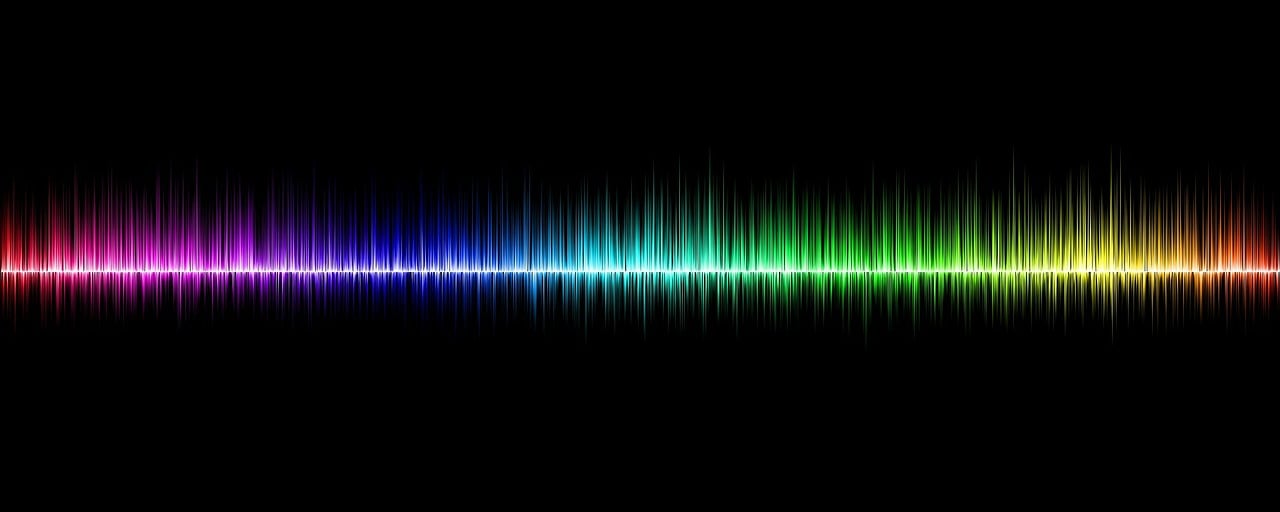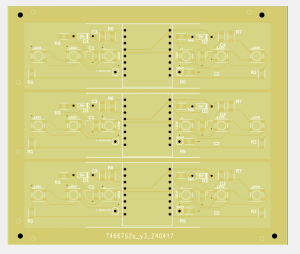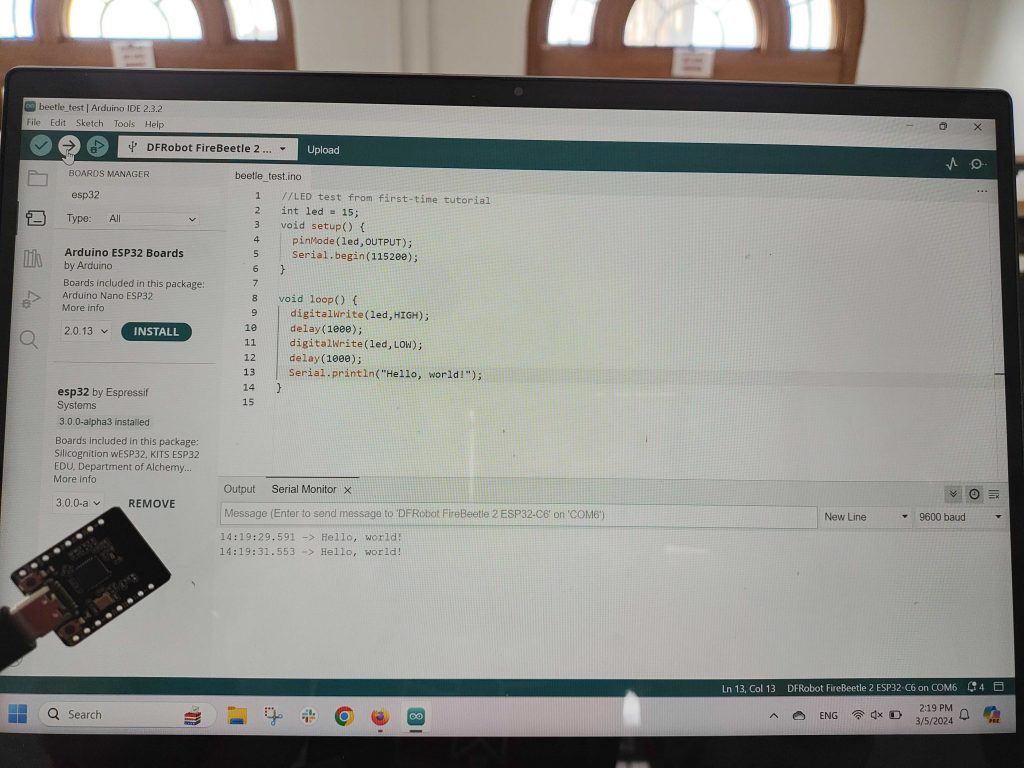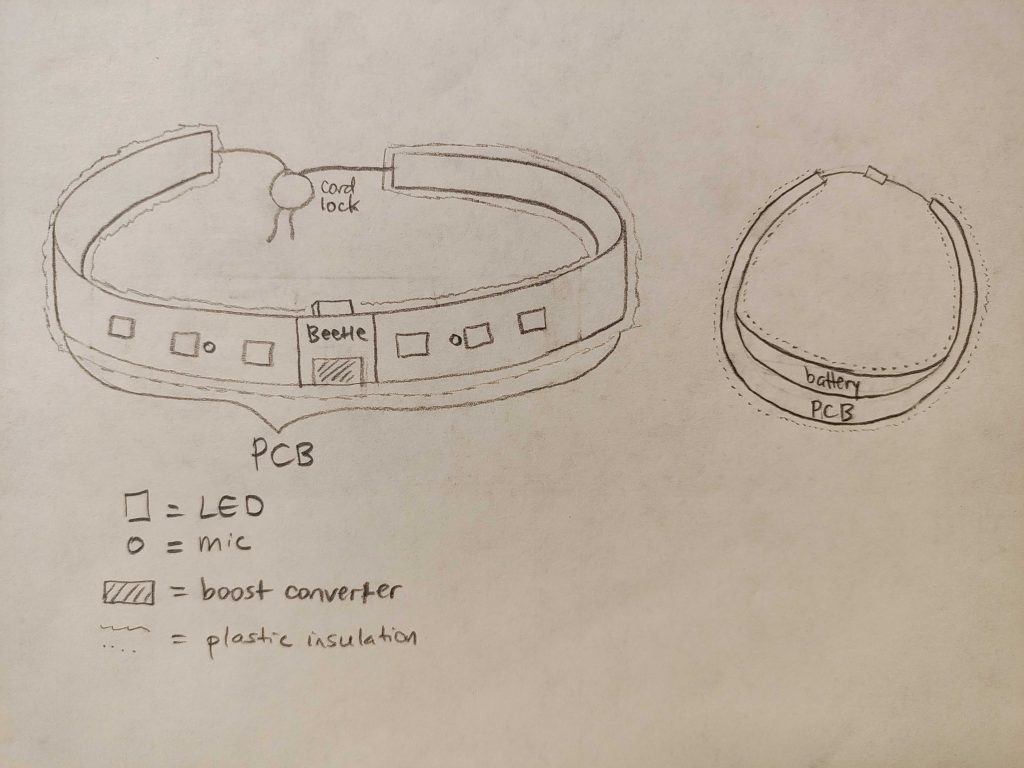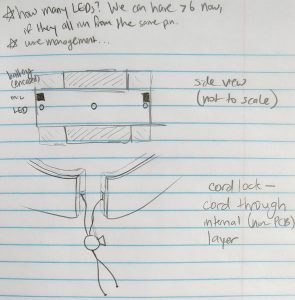This week, I wrote and tested out a program that relates microphone input values to dB values (multiplying/dividing input by a constant) on the PCB. I can get a Serial Monitor reading of the left and right microphone values that has approximately the right magnitude when the input from each microphone is scaled down by 10.
Unexpectedly, using no resistor (open) in the spaces meant for the gain resistor on the analog microphones returns reasonable values. The values returned are on the order of the values for minimal resistance (when the space for the gain resistor is occupied by a wire).
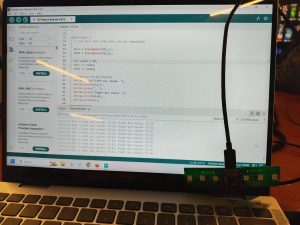
This photo shows sample results from the microphones without any resistor.
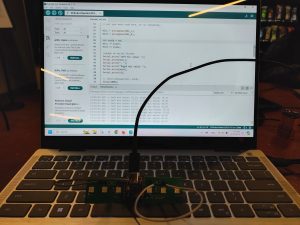
This photo shows sample results from the microphones when they have a gain connection of minimal resistance (wire).
Progress was technically behind on microphone signal processing, the Bluetooth-webapp connection, and visualization of decibel readings. Microphone signal processing is now expected to be complete by this Friday. Bluetooth is most relevant to webapp-device integration, and can be addressed after the interim demo. However, it might be useful to continue searching for resources/information if other tasks are completed early. Visualization of decibel readings is expected to be complete before March 30th.
Bluetooth research proceeded. I attempted to go through the steps of the Bluno basic demo (https://wiki.dfrobot.com/Bluno_Beetle_SKU_DFR0339, https://wiki.dfrobot.com/Bluno_SKU_DFR0267#Bluno_Basic_Demo, troubleshooting information https://wiki.dfrobot.com/Bluno_SKU_DFR0267#target_7, https://support.arduino.cc/hc/en-us/articles/6554914611228-Compilation-error-exit-status-1), under the assumption that it would be fairly similar to the Beetle’s BLE system. I was unsuccessful. However, I was able to install the APK on my phone and look at the names of Bluetooth devices in the area (resources: ttps://www.lifewire.com/install-apk-on-android-4177185, https://www.softwaretestinghelp.com/how-to-open-apk-file/, https://support.google.com/googleplay/thread/56676897/how-do-i-install-3rd-party-apps-and-apk-files-on-my-motorola-g-stylus?hl=en). I looked at these resources (https://www.arduino.cc/reference/en/libraries/arduinoble/, https://www.arduino.cc/reference/en/language/functions/communication/serial/println/) when trying to debug the code; it printed an error reading “controller lib commit: [77d09ce]”. This error apparently stems from a conflict between the ESP32-C6 module and the main controller module (https://github.com/h2zero/NimBLE-Arduino/issues/645). It seems like we would have to change how the Bluetooth module and the Beetle interact with each other in order to fix this problem.
Most of my tasks this week will focus on microphone signal processing. I’m going to tune the scale that determines output values: gather microphone data from an established sound, measure the sound dB externally, and improve the microphone results by adjusting the scale value to better match the external measurement (thank you, Freda, for suggesting this experiment). I would also like to graph some portion of these results (both from the external measurements and the microphones’ measurements).
For Friday, I intend to update the microphone signal processing code to:
Take multiple samples per second and average or otherwise combine them in order to account for external noise not relevant to the user (for example, tapping the device near a microphone location).
Use an FFT (https://en.wikipedia.org/wiki/Fast_Fourier_transform) like https://projecthub.arduino.cc/abhilashpatel121/easyfft-fast-fourier-transform-fft-for-arduino-03724d to define dB value as based on the highest amplitude of the highest relevant frequency in the microphone input, and use Serial Plotter to visualize the frequency results.
This week, I also intend to participate in timeliness, accuracy, and heat tests for the hardware components of the bracelet.
